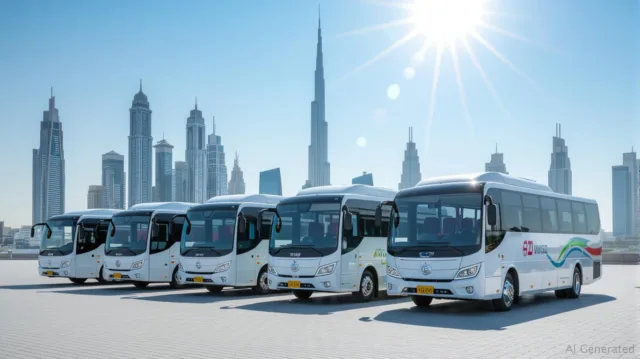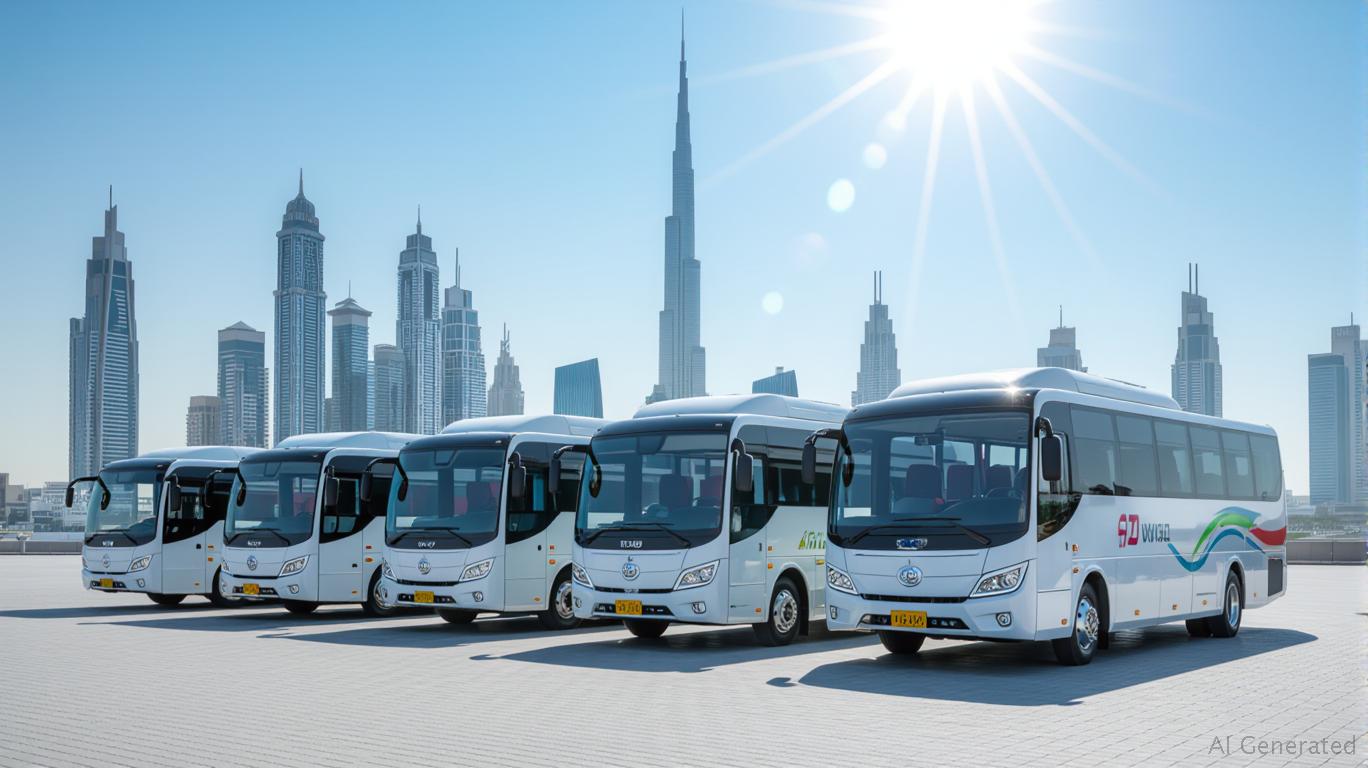BYD, the world’s largest electric vehicle (EV) manufacturer, is rewriting the playbook for fleet electrification through strategic partnerships that blend cost efficiency, infrastructure integration, and cutting-edge technology. By forging alliances with regional leaders like the UAE’s Safeline Group and Southeast Asia’s Grab, BYD is creating a replicable model for transitioning commercial fleets to zero-emission vehicles. This ecosystem-driven approach not only accelerates EV adoption but also positions BYD as a key beneficiary of the global shift toward sustainable transportation.
The UAE: A Test Case for Scalable Electrification
BYD’s partnership with the UAE’s Safeline Group exemplifies how B2B fleet deals can drive large-scale EV adoption. In 2024, Safeline committed to transitioning its entire fleet of ICE vehicles to BYD’s electric trucks and vans over three years, starting with 12 vehicles. The collaboration, facilitated by Al-Futtaim Electric Mobility (a regional EV distributor), addresses two critical barriers to electrification: upfront costs and charging infrastructure.
- Cost Efficiency: Safeline benefits from BYD’s vertically integrated supply chain, which reduces EV pricing and offers extended battery warranties. This aligns with the UAE’s Net Zero 2050 vision, which mandates greener logistics.
- Infrastructure Synergy: Al-Futtaim’s role as an EV charging network provider ensures that Safeline’s drivers have access to reliable charging stations, a key enabler for fleet-wide electrification.
The UAE’s success here could be replicated in other Gulf Cooperation Council (GCC) nations, where governments are incentivizing fleet electrification through subsidies and mandates.
Southeast Asia: Grabbing Market Share with Tech-Driven Partnerships
In Southeast Asia, BYD’s collaboration with Grab—Asia’s ride-hailing giant—is a masterclass in ecosystem integration. Their 2025 agreement to deploy 50,000 BYD EVs across six countries addresses both driver economics and platform optimization:
- Lowering Barriers: Grab offers leasing rates 30% cheaper than ICE vehicles, paired with extended battery warranties. This makes EVs financially viable for drivers, who previously avoided upfront EV costs.
- IoT-Driven Efficiency: BYD’s EVs are embedded with Grab’s navigation and telematics systems, enabling real-time data sharing. This improves route optimization, reduces surge pricing, and enhances Grab’s hyperlocal mapping accuracy.
- Premium Play: The Denza D9, a luxury EV, targets Grab’s premium “Exec” fleet, offering a revenue upgrade for drivers while appealing to eco-conscious riders.
The result? A win-win: Grab strengthens its platform’s sustainability credentials, while BYD gains a foothold in a region projected to have 4.5 million EVs on roads by 2030.
Competitive Edge: V2G Tech and Regional Know-How
BYD’s partnership with UK-based Octopus Energy adds another layer of innovation. Their Power Pack Bundle—combining V2G-ready BYD Dolphins with bi-directional charging and free home energy—demonstrates how EVs can become grid-stabilizing assets. This dual revenue stream (vehicle sales + energy services) distinguishes BYD from competitors like Tesla, which focus primarily on consumer markets.
In emerging economies, where grid reliability is a challenge, V2G-enabled fleets could be game-changers. BYD’s early mover advantage in Southeast Asia and the UAE positions it to scale this model globally.
Why Investors Should Take Note
BYD’s B2B fleet strategy offers three compelling investment angles:
- Scalability: Partnerships like Safeline and Grab are templates for other regions. With 35% EV market share in Southeast Asia, BYD is already ahead of Tesla and VinFast.
- Risk Mitigation: Fleet deals reduce reliance on volatile consumer demand. Government-backed projects (e.g., UAE’s Net Zero 2050) provide stable revenue streams.
- Technological Moats: V2G integration and IoT partnerships create barriers to entry, as seen in Grab’s platform lock-in.
The Bottom Line: BYD’s Playbook for the EV Transition
BYD’s success lies in its ability to bundle EVs with ecosystem services—charging infrastructure, financing, and smart tech—that make electrification practical for businesses. In contrast to Tesla’s premium focus, BYD’s model targets mass markets in emerging economies, where cost-conscious fleets and governments are eager to decarbonize.
Investment Recommendation: BYD’s stock (002594.SZ) is a buy for long-term investors betting on the EV transition. While Tesla dominates headlines, BYD’s B2B strategy and regional partnerships are quietly building a sustainable, scalable business. Look for catalysts in 2025: the UAE’s fleet rollout, Grab’s EV expansion, and V2G partnerships in Europe.
The EV revolution isn’t just about cars—it’s about ecosystems. BYD is proving that the first to build them wins.










